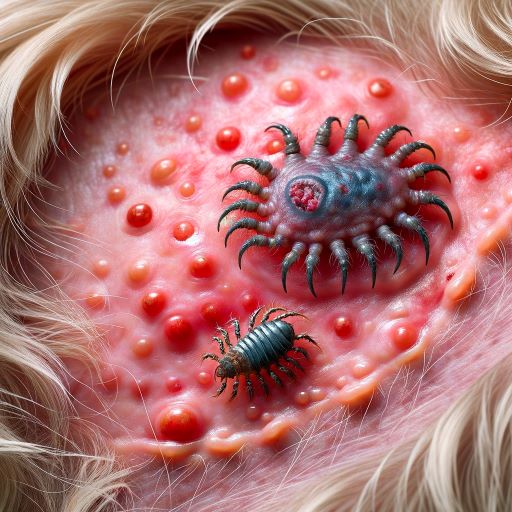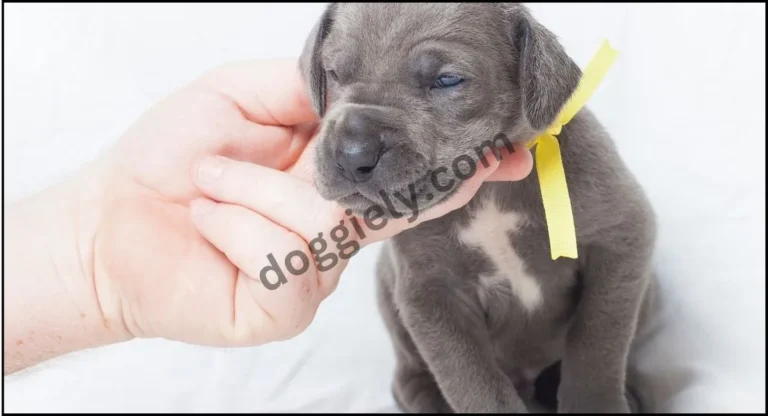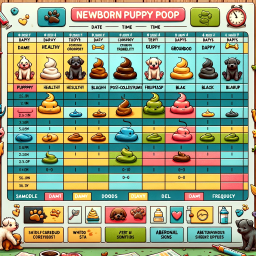Why Are My Dogs Balls Black? Best Number 1 Answer

Why Are My Dogs Balls Black? To know it read the full article. The color of a dog’s testicles, often referred to as “balls,” is usually determined by their breed and unique characteristics. It’s not uncommon for dogs to exhibit dark or black pigmentation in their scrotum.
As a devoted dog owner, it’s natural to be vigilant about your dog’s health and well-being. One question that might arise, especially in male dogs, is “Why are my dogs balls black?” This concern, though seemingly peculiar, can be a significant indicator of your dog’s health. Let’s delve into this topic to understand what this discoloration might mean and when it’s time to consult your veterinarian.
Why Are My Dogs Balls Black?
In this article, I have explained this in details.
Is Discoloration a Cause for Concern?
Firstly, this question is same as saying what color are dogs balls supposed to be? it’s important to note that some degree of color variation in a dog’s testicle is normal. The skin in this area can range from pink to black, depending on the breed and individual characteristics of the dog. However, if you notice a sudden change in color or texture of dog balls, it’s worth paying attention to.
Here is a simplified table that gives a general overview of the breed, typical pigmentation, and an estimated age range for noticeable changes in the scrotum area. Keep in mind that this information is quite general and for specific concerns or detailed information, consulting a veterinarian or a breed specialist is always recommended.
| No. | Breed | Typical Genetic Pigmentation | Estimated Age of Change |
|---|---|---|---|
| 1 | Labrador Retriever | Black, Brown, Pink | 3-5 years |
| 2 | German Shepherd | Darker (Black/Brown) | 4-6 years |
| 3 | Golden Retriever | Light to Medium Brown | 3-5 years |
| 4 | Bulldog | Pink to Brown | 2-4 years |
| 5 | Beagle | Light Brown to Black | 3-6 years |
| 6 | Poodle | Black, Brown, Pink | 3-5 years |
| 7 | Rottweiler | Dark Brown to Black | 4-7 years |
| 8 | Yorkshire Terrier | Black to Grey | 2-4 years |
| 9 | Boxer | Pink to Dark Brown | 2-5 years |
| 10 | Siberian Husky | Pink to Dark Grey | 3-5 years |
| 11 | Dachshund | Brown, Black | 3-5 years |
| 12 | Great Dane | Dark Brown, Black | 3-6 years |
| 13 | Doberman Pinscher | Dark Brown, Black | 4-6 years |
| 14 | Australian Shepherd | Pink, Light Brown | 2-4 years |
| 15 | Shih Tzu | Light to Dark Brown | 2-4 years |
| 16 | Miniature Schnauzer | Black, Grey | 3-5 years |
| 17 | Chihuahua | Pink to Brown | 2-4 years |
| 18 | Border Collie | Black, Brown | 3-6 years |
| 19 | Saint Bernard | Pink to Dark Brown | 3-5 years |
| 20 | Bichon Frise | Pink, Light Brown | 2-4 years |
| 21 | Cocker Spaniel | Brown, Black | 3-5 years |
| 22 | Maltese | Pink to Light Brown | 2-4 years |
| 23 | Pug | Black, Brown | 2-4 years |
| 24 | Weimaraner | Dark Grey, Brown | 3-5 years |
| 25 | Boston Terrier | Black, Brown | 2-4 years |
| 26 | Pembroke Welsh Corgi | Light to Dark Brown | 3-5 years |
| 27 | Shetland Sheepdog | Black, Brown | 3-6 years |
| 28 | Bernese Mountain Dog | Dark Brown, Black | 3-6 years |
| 29 | Mastiff | Dark Brown, Black | 4-7 years |
| 30 | French Bulldog | Pink to Brown | 2-4 years |
This table is a general guideline and should not be used as a definitive source for medical or breeding purposes. The age at which changes occur can depend on factors such as overall health, environmental conditions, and individual genetic variability.
Possible testicle Health Issues
1. Infections
One possible reason for dogs testicles black could be as a result of a skin infection. Infections can cause the skin to become irritated, inflamed, and darker. This could be due to various reasons, including poor hygiene, allergies, or exposure to irritants.
2. Hormonal Changes
Hormonal changes, especially in older dogs, can lead to changes in skin pigmentation. This is usually a normal part of aging, but it’s still a good idea to keep an eye on any significant changes.
3. Tumors or Growths
While less common, the appearance of black spots or a generalized darkening could indicate the presence of tumors or growths. These could be benign or malignant, and only a veterinarian can make this distinction.
4. Hyperpigmentation
Hyperpigmentation is a condition where the skin becomes darker. This can be due to a variety of factors, including chronic irritation, hormonal imbalances, or genetic predispositions.
INFECTION ON DOG’S TESTICLE
When a dog experiences an infection in the testicles, it’s a condition that requires immediate veterinary attention. This type of infection, often referred to as orchitis or epididymitis, can cause a range of symptoms. Here’s a detailed look at the potential symptoms:
- Swelling and Redness: One of the most noticeable symptoms is swelling of the testicles. The affected area may also appear red and feel warm to the touch.
- Pain and Discomfort: The dog may exhibit signs of pain, which can be evident in the way it walks or sits. Dogs might try to lick or bite the affected area due to discomfort.
- Fever: Infections often lead to fever. If your dog seems lethargic and has a warmer-than-normal body temperature, it could be a sign of infection.
- Discharge: There may be a discharge from the penis, which can vary in color and consistency. This is a clear sign of infection and requires immediate veterinary care.
- Loss of Appetite: Dogs with a painful infection may lose their appetite or refuse to eat.
- Changes in Urination: Difficulty urinating, frequent urination, or any noticeable changes in urinary habits can be a symptom of testicular infection.
- General Lethargy: Dogs feeling unwell often become lethargic and may show a lack of interest in activities they usually enjoy.
- Aggression or Irritability: Due to pain and discomfort, some dogs may become irritable or show signs of aggression.
When to See a Vet
It’s crucial to monitor the situation and seek veterinary advice if:
- The discoloration of is accompanied by swelling, pain, or discharge.
- There are changes in your dog’s behavior, such as lethargy or loss of appetite.
- The skin change is rapid or spreads to other areas.
- If the condition does not improve despite basic care or worsens over time.
What to Expect
Your vet might conduct a physical examination, take a skin scraping for laboratory analysis, or recommend other diagnostic tests. Treatment will depend on the underlying cause and may include medications, changes in diet, or even surgery in rare cases.
Prevention and Care
While not all causes of dog balls black or discoloration are preventable, good hygiene and regular check-ups can go a long way. Ensure your dog is groomed regularly, and inspect their skin during grooming sessions for any unusual changes. A balanced diet and regular exercise also contribute to overall skin health.
FAQ:
Why is my dogs balls purple?
While it’s not common for a dog’s testicles to be purple, there are various reasons why this might occur. One possibility is that your dog may have a condition called bruising or hematomas, which can lead to discoloration. Another reason could be related to changes in blood flow or potential vascular issues.
What is the black sack after neutering?
After neutering a male dog, the black sack you may notice is the scrotum. Following the neutering of a male dog, the darkened sac you observe is the scrotum. Neutering entails the removal of the testicles, while the scrotum, which previously housed them, is typically preserved.
Is it normal for dogs to have balls?
Yes, it is normal for male dogs to have testicles, commonly referred to as “balls.” Testicles are a natural part of a male dog’s anatomy and play a crucial role in reproductive functions.
Why are my dogs balls bleeding?
If you observe bleeding from your dog’s testicles, it’s crucial to promptly consult a veterinarian for immediate attention. The bleeding may stem from different causes, including injuries, infections, or complications arising from recent surgeries like neutering.
Why is my dog’s private area black?
The dark color in your dog’s private area is typically due to natural pigmentation, which varies from one dog to another. Similar to the diversity in their coat colors, dogs may have varying shades in regions like their genitals.
How do I know if there’s something wrong with my dogs balls?
Keeping an eye on your dog’s testicles is essential for their health. If your dog’s testicles are swollen, it could be because of an infection, inflammation, or even a twist. Whimpering suggests your dog is in pain. It’s important to take your dog to the vet right away.
Conclusion
In conclusion, while a blackened scrotum in dogs can be a normal occurrence, significant changes should not be ignored. Regular veterinary check-ups and staying alert to changes in your dog’s health are key. Remember, early detection and treatment are vital for managing any potential health issues. Your dog’s health and comfort depend on your awareness and action. I hope I have cleared the confusion of this question: Why Are My Dogs Balls Black?
Related Posts:
Read More: Why Does My Dog Open His Mouth When I Pet Him? 7 Reasons
Read More: Why Does My Dog Keep Sniffing My Legs: 5 Common Reasons
Read More: Why Does My Dog Bite Me In The Morning? 2 Way To safe From
Read More: Why Are My Dogs Balls Black? Best Number 1 Answer
Read More: Why Do Dogs Like Peanut Butter?
Read More: Why Does My Dog Nibble My Ear? 10 Reasons
Read More: Why Does My Dog Move Its Bed Around?
Read More: Why Does My Dog Bring Me His Food?
Read More: Why Does My Dog Lay His Head Over My Neck? 7 Reasons





